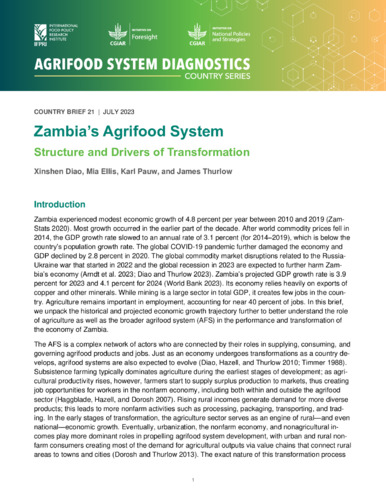Zambia’s agrifood system structure and drivers of transformation
Abstract
Zambia experienced modest economic growth of 4.8 percent per year between 2010 and 2019 (ZamStats 2020). Most growth occurred in the earlier part of the decade. After world commodity prices fell in 2014, the GDP growth rate slowed to an annual rate of 3.1 percent (for 2014–2019), which is below the country’s population growth rate. The global COVID-19 pandemic further damaged the economy and GDP declined by 2.8 percent in 2020. The global commodity market disruptions related to the Russia Ukraine war that started in 2022 and the global recession in 2023 are expected to further harm Zambia’s economy (Arndt et al. 2023; Diao and Thurlow 2023). Zambia’s projected GDP growth rate is 3.9 percent for 2023 and 4.1 percent for 2024 (World Bank 2023). Its economy relies heavily on exports of copper and other minerals. While mining is a large sector in total GDP, it creates few jobs in the country. Agriculture remains important in employment, accounting for near 40 percent of jobs. In this brief, we unpack the historical and projected economic growth trajectory further to better understand the role of agriculture as well as the broader agrifood system (AFS) in the performance and transformation of the economy of Zambia.

